#soji-ji
Text


The Suzuki Kinsen 鈴木錦泉 prints I shared the other day spurred this idea for this ukiyo-e style Okita Soji and Okada Izo.
Since this isn't a style I work in at all, I closely copied two of the poses from Suzuki's work, changing the details as needed.
The backgrounds are prints by Kawase Hasui 川瀬 巴水, from ukiyo-e.org. The left is Autumn Rain at Nanzen-ji, and the right is Kyoto Ohara Sanzen-in.
25 notes
·
View notes
Note
Hi there! I'm wishing you a very bright and fun filled day ! Would you mind giving some fc ideas for a Korean fc over the age of 30? They don't just have to be Korean, they can be mixed! I'm really hoping to get some age diversity so please, any fc over the age of 30. Thank you for taking the time to read ! Take care of yourself out there!
Nicky Endres (1982) Korean - is non-binary, transfeminine, genderqueer, and genderfluid (they/she).
Charlyne Yi (1986) Yuki, Kapampangan Filipino, Korean, Mexican, Spanish, Irish, French, and German - is non-binary and queer (they/them).
Women:
Youn Yuh Jung (1947) Korean.
Go Doo Shim (1951) Korean.
Jean Yoon (1962) Korean.
Jin Xing (1967) Korean, was born in China - is trans.
Sandra Oh (1971) Korean.
Kim Seo Hyung (1973) Korean.
Grace Park (1974) Korean.
Harisu (1975) Korean - is trans.
Merle Dandridge (1975) Korean, Japanese / African-American.
Moon Bloodgood (1975) Korean / Dutch, English, Welsh, Irish.
Kim Joo Ryoung (1976) Korean.
Kim Hee Sun (1977) Korean.
Linda Park (1978) Korean.
Denyce Lawton (1978) African-American / Korean.
Ha Ji Won (1978) Korean.
Lee Si Yeon (1980) Korean - is trans.
Sandra Yi Sencindiver (1980) Korean / American.
Cho Yeo Jung (1981) Korean.
Jun Ji Hyun (1981) Korean.
Jung Ryeo Won (1982) Korean.
Son Ye Jin (1982) Korean.
Jamie Chung (1983) Korean.
Greta Lee (1983) Korean.
Jung Yu Mi (1983) Korean.
Shin Min Ah (1984) Korean.
Jessica Lu (1985) Chinese / Chinese, Japanese.
Kim Ok Bin (1987) Korean.
Men:
Yoo Joon Sang (1969) Korean.
Park Hee Soon (1970) Korean.
Don Lee (1971) Korean.
Rick Yune (1971) Korean.
Hu Bing (1971) Korean.
Will Yun Lee (1971) Korean.
Sung Kang (1972) Korean.
David Lee McInnis (1973) Korean / German and Irish.
Soji Arai / Sohee Park (1975) Korean-Japanese.
Song Seung Heon (1976) Korean.
Brian Tee (1977) Korean / Japanese.
Ha Jung Woo (1978) Korean.
Gong Yoo (1979) Korean.
Leonardo Nam (1979) Korean.
Daniel Henney (1979) Korean / Irish, English.
Kim Nam Gil (1980) Korean.
Miyavi (1981) Japanese / Korean.
Lee Joon Gi (1982) Korean.
Steven Yeun (1983) Korean.
Kevin Kreider (1983) Korean.
Uhm Tae Goo (1983) Korean.
Yoo Ah In (1986) Korean.
Please do not use these for krp!
6 notes
·
View notes
Photo
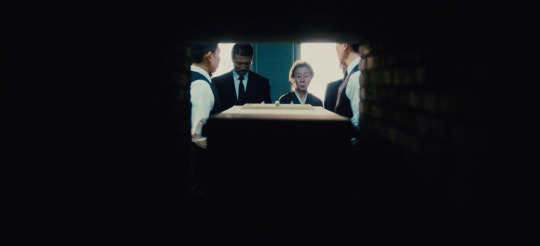
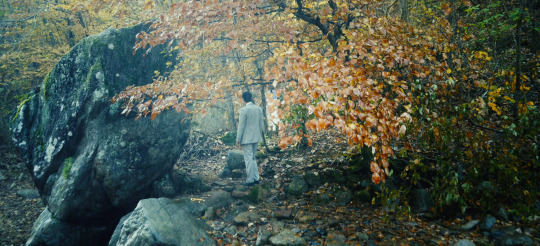

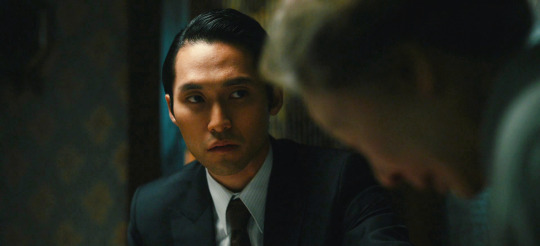

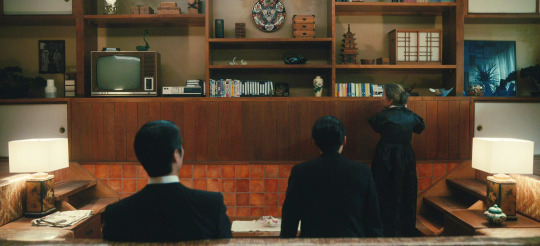

#3#pachinko#pachinkoedit#tvedit#pachinko: 103#lee min-ho#kim min-ha#jin ha#youn yuh-jung#soji arai#steve sang-hyun noh#jeong in-ji
64 notes
·
View notes
Text
Pachinko Book vs Korean Drama

I knew about the Korean Drama adaptation of this novel months before it aired on Apple TV. I was interested in seeing the series and when it aired, I watched it. The 8 episode long drama had documentary elements laced to the story that went back and forth from the past to the "present." The story begins in 1989 with Solomon working at a successful bank in the United States and going to Japan to work at a branch to increase his reputation to go back to New York to get the promotion he was being denied. He arrives to Japan and stays with his family and this is when we see his grandmother. Once she is in the picture, we start looking into her flashbacks. This story telling style chops a lot of the story and leaves the audience that haven't read the book hanging in the air - with too many unanswered questions. This is the main reason why I decided to read the book sooner rather than later.
In order to do justice to the novel, the series should have been longer. And I think it would have worked better if it had gone in chronological order because in order to tie the story of the grandmother to that of the grandson, they changed a lot of things. Kyunghee dies in the series but she didn't die in the novel. In the series they had never gone to Korea after the occupation was over, in the book Sunja did visit Korea a couple of times and so had Mosazu and Solomon. Her mother did move to Japan and in the series Sunja never saw her mother after moving with Isak to Japan. In the series they give a backstory to Hansu that we didn't have in the novel. We knew about the Hansu in his 30s, 40s, up to his 70s since he was an always present force in Sunja's life whether she liked it or not. . . Even Solomon's story was changed too.
The story is named Pachinko because that was the one job Koreans could have and prosper in Japan. Pachinko was also linked to the Korean mafia, so Koreans that ran Pachinko businesses were not seen as respectable. In the novel we can see how this business becomes part of the family life. How Noa tries to avoid it and how Mosazu embraces it in a way that he can maintain himself clean from the mafia. In the series we don't see this. In fact, in the series we hardly see Noa's and Mosazu's stories, their lives were important and directly connected to the title of the novel. The many questions I had were related to these two characters, Isak and Hansu. The novel answered my questions and gave me so much more.
Min Jin Lee's novel tells a compelling story while the series just hints at it in a poorly way. Even as a stand-alone series - even if it hadn't been based on a novel - the series had too many holes in the story, it left us with too many questions. The novel has an open ending, but that's life - it is ongoing - and even so, it felt like we had reached a full circle, we could guess what would happen next.
The series had great performances, but the adaptation could have been better.
I liked the series but the book is so much better.
#pachinko#historical fiction#realistic fiction#korean drama#min jin lee#lee min jin#lee min ho#kim min ha#Youn Yuh-Jung#Jin Ha#Soji Arai#Felice Choi#Jeong In-Ji#Lee Dae-Ho#Noh Sang-Hyun#Han Joon-Woo
7 notes
·
View notes
Text
Pachinko

The moment I read the news that Lee Min Ho would be part of a new Korean series based on a historical novel, I knew I had to see it. This 8 episode long series connects the lives of Kim Sun Ja when she was young and her life as a grandmother, telling the stories of her grandson, her son, lovers and parents.
It has facts mixed into it and integrates documentary elements into the storytelling. It touches the time Korea was a Japanese colony and 1989. It touches topics such as AIDS, the Japanese-Korean relationship in Korea and in Japan. It tells the story of so many Korean families that ended up living in Japan and never going back home. It is a story about family love, friendship and love between a man and a woman.
I must admit that its open ending left me with a lot of questions:
What happened to Noa?
Did his relationship with his father had anything to do with what Sun Ja regrets the most?
What happened to Isak?
What happens to Solomon? Will he follow up on his plan? What will happen to the old lady who didn't want to sale her home?
I looked for the book and added it to my Wishlist. I will have to read this book to see if my questions get answered and to learn what the series might have cut.
It is a series worth watching.
Poster from KORB - https://korean-binge.com/2022/02/24/here-are-3-things-to-expect-from-pachinko-korean-series/
#pachinko#korean drama#lee min ho#kim min ha#youn yuh jung#Jin Ha#soji arai#mari yamamoto#anna sawai#jeong in ji#noh sang hyun#jung eun chae#yoo na#han joo woo#jung woong in#park jae joon
2 notes
·
View notes
Text
Letters from Okita
Translated two more letters from Okita! They, in general, are not about anything - that is, that everything is calm in Kyoto and everything is fine with Shinsen, which in itself is pleasant to read)))
Both were written on the same day, and are intended for Kondo's relatives and Hijikata's relatives. It seems that on that day, someone dropped in to the detachment with whom it was possible to send messages to Edo. His bosses said: "Soji, write that we are fine!", And Soji dutifully wrote :)
07/04/1865 Sato Hikogoro from Okita


English Translation
I am sending you a message on how we are doing.
On these hot summer days, the main thing is that all of you are in good health.
We are all doing well in Kyoto, so don't worry about that.
Forgive me for not sending you any news since last month, but nothing special has happened during this time.
In Kyoto and Osaka, the situation is still unchanged, I am writing to you about this just taking the opportunity.
Finally, I ask you to convey greetings to all your family, starting with your mother, and to all the friends in the dojo, as well as Hijikate-sensei from Ishida.
At the next occasion we will tell you what and how.
Well, that's probably all.
4th of July
From Okita Soji
To Hikogoro-sama
Please, take care of yourself. I bow to this.
Original
(http://bakusin.com/kenka/shomen/shokan3.htm)
以手紙啓上仕り候。残暑厳敷候得共、皆々様益御機嫌御座被遊、大悦至極ニ奉存候。然は京都詰合一同、無事罷有候間、此段乍憚御安意被下候。猶去月より御無沙汰いたし候段、御任免被下候。
尚々、京坂之形勢も無替候間、余は幸便時申上候。乍末御尊母様始、皆々様、御稽古場御連、石田土方先生江も宜敷御伝声可被下候。先は時候伺迄、如此御座候。以上。
七月四日
沖田総司
拝
佐彦五郎様
尚々、時候御厭被遊候。以上。
Commentary
fushigi-dono:
Hijikata Sensei - This refers to Tamejiro, the elder brother of Hijikata Toshizo. And mother Sato is Hijikatina's own aunt Masa.
07/04/1865 Miyagawa Otogoro (Kondo's older brother) from Okita


English Translation
Sorry that without any introductions.
I really hope that you are all safe and sound and full of courage and courage.
By the way, Miyagawa Nobukichi-kimi from our squad is also alive and well. I am writing a little about him here so that your relatives do not worry either.
We are all doing well in Kyoto, so don't worry about that.
I would be very grateful if you could send my regards to Kanda-kun and his family. Also, please say hello to everyone at Yanagi-cho.
We'll let you know the rest at the next opportunity.
Sorry for the brevity.
July 4th
Your Okita Soji
Miyagawa Otogoro-sama
Once again, I wish you all the best.
Original
(http://bakusin.com/kenka/shomen/shokan3.htm)
前文御免被下候。然は皆々様益御勇猛被遊、大悦至極ニ奉存候。次ニ宮川信吉公者、我カ同組ニ而無事罷有候間、御分家様ノ方江も無心配被遊候様、一寸申上候。京都ニ而も一同無事罷有候間、此段乍憚御安意被下候。
毎々恐入候得共、関田君方江も宜敷伝声被下候。尚々、柳町方も宜敷奉願上候。余は幸便之時申上候。艸々不備。
七月四日
沖田総二
拝
宮川音五郎様
尚々、時候御厭被遊候様、重奉存候。
Commentary
fushigi-dono:
This letter is especially noteworthy because Soji wrote his name on it like this: 総 ニ, not 総 司 as usual.
The fact is that the hieroglyph 司 has a very rare reading of "ji / ji". It usually reads "shi / si". Just like in the well-known word "sushi" (or "sushi") which is spelled 寿司.
Therefore, in some anime and films, Okita's name sounds like something like "Soshi" or "Soshi". But thanks to just this letter it is known that in the second syllable of his name there was actually dzi / ji.
Here is its bigger ending:

I like Old Japanese more and more and the way Okita writes in it)) "Kyoto and Osaka" he has one word - Kyosaka, "our squad" - "waga onazigumi" (我 が 同 組), and the most perfect charm - "oddly mosiagemas"
It is also very funny to translate one Japanese word by another Japanese word: instead of "dojo", Okita has "keikojo" (a place for practice, training) everywhere. The word "dojo" probably didn't exist then, but we seem to have got used to it.
Letter Notes:
Greetings to Yanagi-cho - this is Shieikan and the entire Kondo family (now Shinjuku, Tokyo area).
Miyagawa Nobukichi(1843-07.12.1867) - Kondo Isami's cousin, 2nd son of his father's younger sister. His name can still be read Nobuyoshi or Shinkichi, and on some Japanese sites they write that he is Kondo's nephew. In general, a close relative. Naturally, he studied at Shieikan. He enrolled in Shinsengumi in April 1865, when Hijikata, Ito, and Saito were recruiting new recruits to Edo. There, in Edo, and for some time after arriving in the capital, he acted as the personal secretary of HijikataIn November 1867 he participated in the incident at Aburanokoji. On December 7, 1867, at the age of 24, he was killed in Tenman-ya while protecting Miura Kyutaro, who was suspected of killing Ryoma Sakamoto. That evening Miura was guarded by 7 people from Shinsengumi, led by Saito. Miyagawa and another were killed, one was seriously injured, and three others, including Saito, were slightly injured. (this is all from JapoWiki)
Kanda-kun- the surname can also be read "Sekida" and "Sekita", I have not found the correct way. Keep Kanda Shotaro (関 田 庄太郎) for now. Friend of Miyagawa Nobukuchi, and apparently Okita too (they are three of about the same age). He also studied in Shieikan and, together with Miyagawa, came to enroll in Shinsen, but Hijikata did not take him, because this Kanda-Sekida was the eldest son in the family and the heir to the clan. They write that the boy cried out of frustration, and then he came to see off the recruits when they left for Kyoto. He never served in Shinsengumi, but lived through the entire Meiji era.
16 notes
·
View notes
Text

❝ OUR FATE IS IN YOUR HANDS! Hello we’re TAROT! ❞
TAROT CARD (often stylized as TAROT) is a nine membered group under REDRUM RECORDS XPERIENCE ENTERTAINMENT. They’re known for their fantasy concept and complex storyline; they tend to have very heavily plot driven storylines, most of which has been left up to theorize by fans. The group consists of nine members in total at the time of their debut but they’re planning on having subunits that have their own eras at different times; sometimes might debut the group as a whole in some eras as well. They were set to debut around APRIL 9TH 2021 with their first album MAGIC CONTRACT.

⸻ ⧓ BASICS
DEBUT ALBUM — MAGIC CONTRACT
type of album: full album
title song: SIGN HERE
how many songs: 8
NUMBER OF MEMBERS — nine
age range of members — 1995 - 1999
CONCEPT — fantasy, lil bit of witchy if you squint, magic, fate&destiny, tarot deck, royal!au, chess
FANDOM NAME — Fates
OFFICIAL COLORS — [#833C2B] BURNT UMBER, [#BF7B58] BROWN SUGAR, [#261917] LICORICE, [#070505] BLACK, [#8D583F] RAW UMBER

⸻ ⧓ ADDITIONAL INFORMATION
the whole group’s concept is through a game of Nightmares and Necropoli; N & N.
two members represent each of the four suits of the deck: Cups, Pentacles, Swords, and Wands.
one half of the suits are in the house of Sedah.
one half of the suits are in the house of Siriso.
the remaining member (the leader) acts as the dealer of the card deck; the GM (Game Master) for the game, and will occasionally appear in different subunits as an additional member.

⸻ ⧓ MEMBER LINE-UP

Park ‘LEO’ Chae-Kyung ... [ 1996 ] ... Leader, Vocalist, Dancer
Cho ‘O.N.’ Si-Yeon ... [ 1995 ] ...
Kyo ‘S.O. / S’ So-Ri ... [ 1999 ] ...
Kyo ‘SOJI’ So-Ji ... [ 1999 ] ...
Thaksincha ‘KOI’ Sirishumsaeng ... [ 1996 ] ...
Kim Mi-Yong ... [ 1997 ] ...
Sa ‘SAGE’ Ga-Eun ... [ 1999 ] ...
Charli ‘CHARLI’ Ah ... [ 1997 ] ...
Suzuki ‘SUSUMI / SUMI’ Natsumi ... [ 2000 ] ...
Ah Su-Bin, Ah Su-Yun, Sa Ga-Eun, Kim Mi-Yong, Kwang Cho-Hee , Kyo So-Ri, Cho Si-Yeon, Park Chae-Kyung, Kyo So-Ji.

⸻ ⧓ SOCIAL MEDIA
Twitter: @ TAROT_XECOFFICIAL
Youtube: TAROT CARD OFFICIAL
Reality show/idol webseries: ESCAPE THE NIGHT
Vlive: XECTAROT
Instagram: @ TAROTCARD_OFFICIAL
Spotify: TAROT CARD
Monthly followers: TBD
Monthly song streamed: TBD
Top 5 streamed songs:
➔ BENEATH THE MASK [MAGIC CONTRACT]
➔ SIGN HERE [MAGIC CONTRACT]
➔ LOCK & KEY [MAGIC CONTRACT]
➔ TO BE IN PIECES [MAGIC CONTRACT]
➔ ON THE NIGHT THE MOON TURNED RED [MAGIC CONTRACT]
Where they’re most listening in:
➔ Busan, South Korea
➔ Tokyo, Japan
➔ Shanghai, China
➔ Incheon, South Korea
➔ Osaka, Japan

⸻ ⧓ DISCOGRAPHY
[2021] MAGIC CONTRACT
[2021] THIRD EYE
[2022] CONFESSIONAL

⸻ ⧓ TOURS
.
#kumokocnet#kocsociety#aeskocnet#might edit later#xecompany#xperience entertainment#xe tarot#g:tarot#koc#kpop oc group#kpop oc company#fake kpop company#oc kpop company#fake oc company#kpop fake girl group#fake kpop group#fake kpop gg#idol!oc#idol oc#fake kpop idol#idol#kpop oc
15 notes
·
View notes
Text

06-01-2020
Done watching 16 episodes of “My Secret, Terrius/Terrius Behind Me/Codename: Terrius”
Starring SoJi Sub and Jung In Su
10/10! Two thumbs up! Bravo! Bravo!
No other words can describe this very brilliant Korean series. Just amazing. I loved how the story unfolds. The plot twist was so unexpected. I loved how the characters was also named after some of the actors in real life.
So Ji Sub never fails to show his excellence in action scenes. *Clap! Clap! Clap!* I also loved his comic side where he used to be a sitter of two very playful kids.


The most handsome and macho babysitter of King Castle Apartment

This series focused on them finding the mole of National Intelligence Service (NIS) and how it ruined there lives.. that’s why there’s no kissing scene, but this.. nose-to-nose 😍💕🥰 I loved how Kim Bon (So Ji Sub) took care of Go Ae Rin (Jung In-Su) and loved her kids like his own. I also admired him on how he protected his “brother” Jin Young Tae (Son Ho Jun) and how he is so concerned on Yoo Ji Hyeon (Im Se-mi).
Overall.. a great Korean series that is definitely highly recommended 👍🏻👍🏻👍🏻
#my secret terrius#kdrama#netflix#korean drama#So Ji Sub#terius behind me#Jung In Su#Go Ae Rin#Terrius#Kim Bon#Jun su#Jun Hui#Jun-Jun twins
7 notes
·
View notes
Text
about soji
the pronounciation “so-ji” sounds very similar to the cantonese word 數字 (look it up, traditional chinese).
what’s very interesting is that 數字 means “number” in cantonese, which shares a semantic field with Data.
i just think it’s neat! i’m guessing dahj may have a similar meaning in another language too, if anyone would like to give it a shot ^^
1 note
·
View note
Photo

Sōji-ji (jap. 總持寺) temple
souvenirshopping and snacking bean paste pancakes
0 notes
Photo

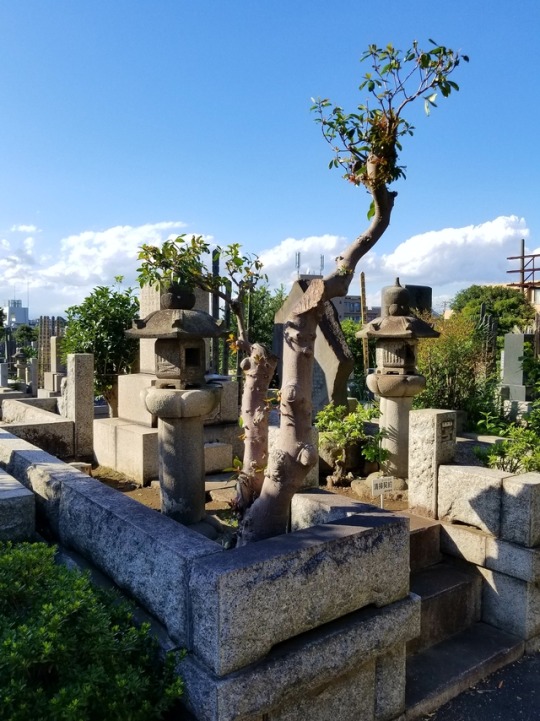
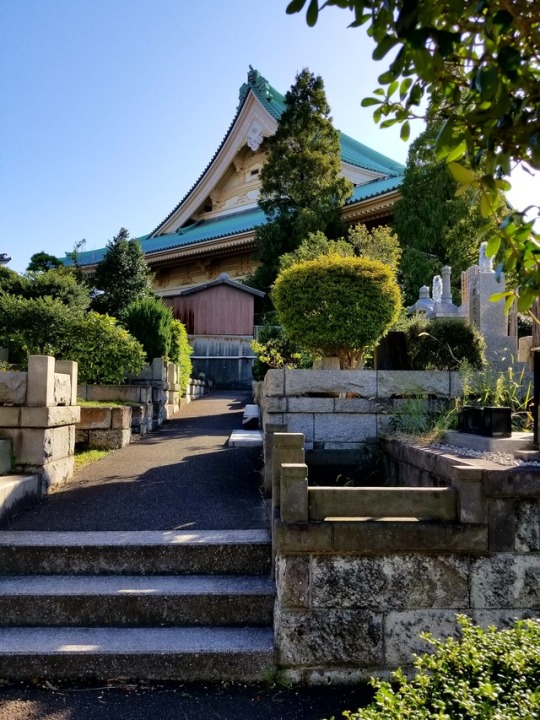

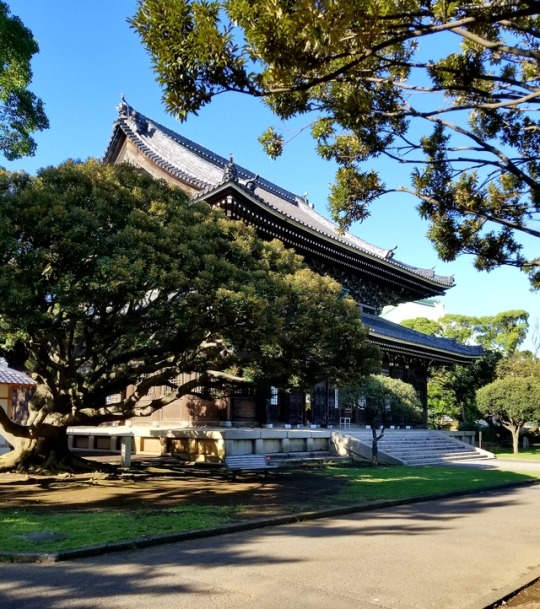
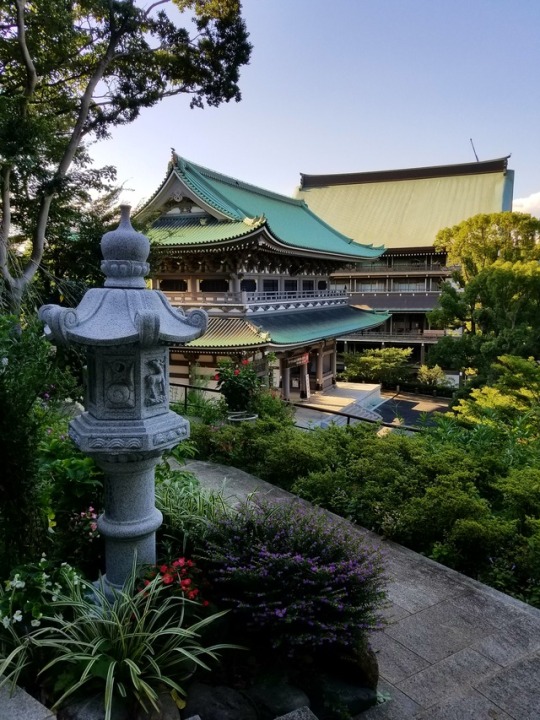

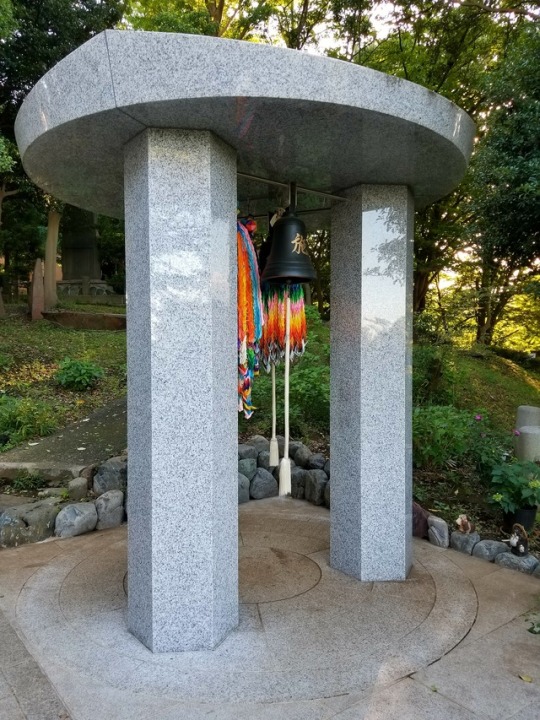

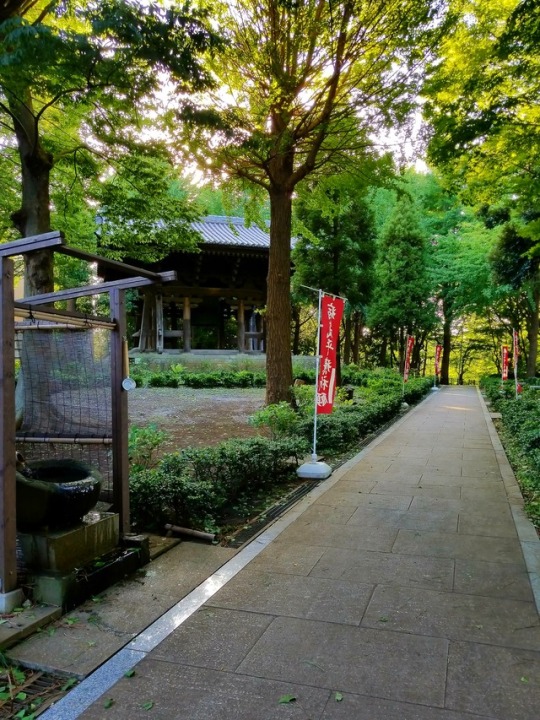
Today was a national holiday, so we had school off. After getting some practical matters out of the way, I paid a visit to Sōji-ji (總持寺), one of the two main temples (daihonzan 大本山) of the Sōtō Zen school of Buddhism.
I’m a little drowsy after a long day, or I’d try to write more, but let me know if you had any questions you wanted to run by me about the pictures I’m sharing or about the temple.
#sojiji#soji-ji#yokohama#bonus points if you can find the crow on the roof of the sanmon#(sixth picture from the top)
0 notes
Text

I read the other day that Sendagaya, located on the far outskirts of Edo during the bakumatsu period, was just countryside. Although some large daimyo mansions were out that way, most notably the lower mansion of the Owari branch of the Tokugawa family, the area was mostly fields and trees.
The building in Sendagaya where Soji was hiding under the name Inoue Sojiro during his last days, was a storage shed on the property of Uekiya Heigoro, which had been converted into a detached cottage, 8 to 10 tatami mats in size, with a small porch.
Heigoro's family were caring for Soji while he was there but had to be careful because they had young children and would have been concerned about them catching his illness. (Although it wasn't really understood how tuberculosis was transmitted, there was some understanding that it was infectious.) It seems that either Heigoro's mother or mother-in-law did most of the work - perhaps that's where the story of the old woman hired to care for him originates.
Soji's sister Mitsu and her husband, Rintaro, had already left Edo by the time Soji returned to the city in 1868, even though many accounts say that Soji stayed with them at first.
Instead, he was shuffled around: at first he was hospitalized at the Western Medical Institute, but when this closed because the new government troops were closing on the city, he was moved to a temple and from there to Dr. Matsumoto’s house, which is where Nagakura Shinpachi visited him after leaving the Shinsengumi in April. Before Dr. Matsumoto left for Aizu, he helped arrange for Soji to be moved to Heigoro's.
It seems there was some connection between Heigoro and a samurai serving the Shirakawa clan, which may have been how Soji ended up at Heigoro's: Soji's father, Okita Katsujiro, had been a retainer of the Shirakawa and Soji himself was born at the Shirakawa clan's lower mansion. Retainers of the Shirakawa attended Sensho-ji temple, which was near the mansion, and which is where the Okita family grave is located (and where Soji was eventually buried).
I like the idea that the little cottage had a nice view of fields and trees.
(Some of the info is from Aikawa Tsukasa's book about Soji.)
#ronindraws#original art#shinsengumi#okita soji#history notes#historical notes#history research#historical research#history reference#historical reference#sendagaya#uekiya heigoro
20 notes
·
View notes
Text
Okita Souji - 2010 Japanese Wiki Entry
From the Japanese-English Bilingual Corpus of Wikipedia’s Kyoto Articles . This is a translation from Okita Souji’s Japanese wiki entry, exactly as it was in 2010. It is taken from PNM00891 in that collection.
For information on the database and how to use it, please check this post.
Just like English wikipedia, none of this information is guaranteed to be accurate. It’s not a current version of the Japanese article either.
As these wiki articles go, Okita’s article is pretty good, because it often explains the sources for some of the facts and stories about him. You have to know where a story came from to be able to judge its reliability. The article isn’t well-organized; like many wiki articles, it suffers from too many authors just editing in their revisions and theories wherever they like, but I think you’ll get a lot out of it.
Some notes on the translation. They’ve consistently written “It is believed that ..... but not proven” when the original article’s meaning is that *someone* has such-and-such a theory, not that it’s commonly believed.
Imina is translated as “original name” when “posthumous name” is the more common English translation. And when it states that Okita’s “real name” was Fujiwara, it’s referring to his clan name, literally “honsei” - real name, but doesn’t mean Okita’s a fake name, just that the Okita family were - like many people - descendants of the Fujiwara clan. (As a bonus, if you’re a Gintama fan. Yorinuki Gintama ED4 is full of all sorts of symbols, including this shot of Okita with wisteria, the symbol of the Fujiwara.)
The translated sentences used in this service contain English contents which are translated by the National Institute of Information and Communications Technology (NICT) from Japanese sentences on Wikipedia. My use of these translated sentences is licensed by the Creative Commons Attribution-Share-Alike License 3.0. Please refer to http://creativecommons.org/licenses/by-sa/3.0/ or http://alaginrc.nict.go.jp/WikiCorpus/ for details.
Soji OKITA (summer, 1842 or 1844 - July 19, 1868) was a member of the Shinsengumi, a special police force in Kyoto, at the end of Edo period (there are two theories about the year of his birth, but no decisive historical materials against either of them have been found. Also, no historical materials confirming his birth date have ever been identified, and all that is known is that he was born in summer). He was the Assistant Vice Commander, captain of the First Corps and a master of kenjutsu sword fighting.
His real family name was Fujiwara.His Imina (original name) was Harumasa and later, Kaneyoshi. His childhood name was Sojiro. He was the eldest son of Katsujiro OKITA, a clansman of Shirakawa Domain in Mutsu Province. He had two older sisters, one of whom, Mitsu OKITA, married Rintaro OKITA, making him the head of the family. Mitsu's great grand son Tetsuya OKITA (1930-) is a scholar of public administration and an emeritus professor of the department of politics and economics at Meiji University.
Biography
He was born in Shirakawa Domain's Edo residence (Minato Ward, Tokyo). His father Katsujiro died when he was four years old, and it is thought that his mother also died when he was young. At the age of about nine, he was apprenticed to Shuzo KONDO, who taught the Tennen Rishin-ryu style of martial arts at a dojo in Ichigaya, Edo, and it was here at the Shieikan dojo that he met fellow students Isami KONDO and Toshizo HIJIKATA, who would later be central in the formation of the Shinsengumi.
Even though he was young, he served as the school manager of Tennenrishinryu. Okita's genius with the sword is said to have been unequalled although his teaching style was rather rough. Later in his life, he softened his teaching style.
He joined the Roshigumi (an organization of masterless samurai) upon its formation in 1863 and left for Kyoto, remaining there with Kondo and forming the Shinsengumi after the group split. Okita's First Corps was constantly tasked with important missions and, although the Shinsengumi was filled with expert swordsmen, often had the most number of kills, and was involved in the assassinations of Kamo SERIZAWA and Hikojiro UCHIYAMA in October, 1863.
Okita's first recorded kill was on the evening of May 11, 1863. His opponent was Yoshio TONOUCHI, a member of the Roshigumi's First Unit, who had come at Hachiro KIYOKAWA's request.
After the Ikedaya Incident of July 8, 1864, where he was involved in the killings of several members of the anti-Shogunate faction, he collapsed after coughing up blood from tuberculosis (according to many theories) but based on his subsequent involvement in the Shinsengumi, it is unreasonable to think that he developed lung tuberculosis on that day. Instead, there is a theory that he collapsed from heat stroke.
In February 1865, he was sent after Shinsengumi Vice Commander Keisuke YAMANAMI, who had attempted to desert, and arrested him in Kusatsu City, Omi Province. Yamanami committed suicide assisted by Okita. Although Okita seemed to regard Yamanami as an older brother, he barely touched upon Yamanami's death in a letter he sent home.
He was active on the front lines until 1867, after which, unable to take part in the Battle of Toba-Fushimi, he was escorted to Osaka.
(The most widely-accepted theory at present is that he was injured on his way to the Battle of Toba-Fushimi and developed tuberculosis on the boat he was being escorted to Osaka on.) [Me: ok, usually I don’t comment within these articles, but no, this is not true and is contradicted in other bits of the article. Wiki is funny this way.]
After defeat at the Battle of Toba-Fushimi, he sailed back to Edo with other members and although according to several theories he joined the Koyo Chinbutai (the successor to the Shinsengumi), he was forced to drop out halfway. After that, it is thought that Ryojun MATSUMOTO, a retainer of the Shogun, made arrangements for him to hide in a plant shop in Sendagaya, where he died in 1868. Since his date of birth is uncertain, there are several opinions about how old he was when he died, but he is believed to have been between twenty-five and twenty-seven.
The purpose of their attack was to avenge the murder of their leader, Kashitaro ITO, by the Shinsengumi the previous month, but Okita had left for the Fushimi Magistrate's office and therefore escaped the attempt. In the evening of the same day, Isami KONDO was shot and injured by Abe and the others on his way back from Nijo Castle. In the evening on the same day, Isami KONDO was shot and got injured by Abe and other members when he was back from Nijo-jo Castle.
Two months after Isami KONDO was beheaded, Okita died, unaware of KONDO's death. The poem he composed on his deathbed reads 'In the dark, flowers and water cannot be discerned unless they move'. His grave is in Sensho-ji Temple in Motoazabu 3 cho-me, Minato Ward, Tokyo. His Kaimyo (posthumous Buddhist name) given by Sensho-ji Temple is Kenkoinjinyomeido-koji. The inscription on the Okita family grave stone states that he held menkyo-kaiden (a document handed down by a teacher to the student he believes is most capable of carrying on his art) for the Hokushin Itto-ryu school as well as Tennen Rishin-ryuu.
There are three theories about his age when he died: twenty-four according to the Okita family grave stone; twenty-five according to documents held by the Okita family; and twenty-seven, if, as described in Shikanosuke KOJIMA's "Ryoyushiden", he was twenty-two when he left for Kyoto.
There are also two opinions about the place where he died, one being Sendagaya and the other Imado (Taito Ward), but at present, it is widely accepted that after staying in Imado to recuperate for a while, he moved to Sendagaya and died there.
Shozan SAKUMA's son, Keinosuke MIURA, had been made fun of by a fellow Shinsengumi officer. There is a story that a few days later, Hijikata and Okita were playing a game of Go when Miura attacked the officer who had made fun of him from behind and Okita, infuriated by the cowardly attack, grabbed Miura by the collar and, calling him a 'bloody idiot', pushed his face into the floor until his nose was raw.
Belying his appearance as an able leader of the Ichiban-gumi, he was apparently a cheerful person who was always telling jokes and laughing. It seems he often played with children in his neighborhood.
When novelist Ryotaro SHIBA was writing a book featuring the Shinsengumi, he interviewed an old woman who used to play with Okita when she was small. (Taking into account that the interview took place around 1960 and that the Meiji Restoration was in 1868, the woman must have been quite old, but it means that people who actually met Soji OKITA were still alive.)
Although Kanefumi NISHIMURA was known for severely criticizing Kondo, Hijikata and other members of the Shinsengumi, he left no comments on Okita or Keisuke YAMANAMI. This seems to show that Nishimura had no bad feelings towards Yamanami and Okita, and Okita is believed to have been easy-going towards people who were not hostile to the Shinsengumi.
It is believed that just before his death, he tried several times to kill a black cat which often sneaked into the plant shop's yard but always missed and, realizing his own weakness, he said as follows. Alas, I cannot kill it!' See! (he said to the old woman who was attending him), I cannot kill it' (this story is said to have been created by Kan SHIMOZAWA.)
There is also a story that he was worried about Kondo and, up until his death, he repeatedly asked, 'I am wondering how the master (Kondo) has been. Didn't we receive a letter from him?' Because people close to him were prohibited from telling him about Kondo's death, he passed away without learning of it.
There is another anecdote that when Kondo was still alive and visiting Okita in bed before setting out with the Koyo Chinbutai, the usually cheerful Okita on this occasion sobbed loudly.
It is generally thought that Kondo, Hijikata and Okita were very close to each other, with Hijikata and Okita in particular being like brothers, but this is largely the result of novels by Ryotaro SHIBA and Kan SHIMOZAWA. There are no materials to show that Hijikata and Okita were extremely close, although there is a record of Okita writing a letter on behalf of Hijikata.
Juro ABE, who was opposed to the Shinsengumi, said, 'Kondo's high-caliber disciples, Soji OKITA and Kuwajiro OISHI, are very cruelhearted men and, from the beginning, appear not to have realized even the existence of the state or the Imperial Court' ("Shidankaisokkiroku") and attacked them and Izo OKADA for having no ideological background and for being used as "tools to kill people".
In addition, according to Okita's students, he was 'extremely harsh and quick-tempered' and they feared him more than the master, Kondo. The image of Okita gained from anecdotes such as his telling his trainees, 'Don't kill people with your sword! Kill them with your body!' and other records differs greatly from the gentle and calm image that is widely known in public.
Okita's most famous sword technique is the 'Sandantsuki' (Three Stage Thrust).
Starting from the Tennenrishin-ryu stance of 'hiraseigan', he delivered three thrusts in the time he was heard to take one step forward. It is often presented in novels as his opponent thinking he has been stabbed once when actually, in the blink of an eye, he has been stabbed three times. However, the exact details are unknown.
According to Sen SATO in "Shinsengumi Ibun", Okita's sword style was identical to his master, Kondo's and even his thin, high-pitched yells were very alike. However, it is thought that he had a habit of leaning his body forward and holding his sword with the point slightly lowered, a slightly different posture to Kondo, who pushed his abdomen a little forward in the hiraseigan stance.)
Shinpachi NAGAKURA's statement that Okita's technique 'left Toshizo HIJIKATA, Genzaburo INOUE, Heisuke TODO, Keisuke YAMANAMI and the others looking like children playing with bamboo swords. Everyone said that if Okita seriously fought his master, Kondo would lose,' ("Nagakura Shinpachi Idan,") is well-known but there are also comments to the same effect from outside the Shinsengumi's inner circle.
Shikanosuke KOJIMA mentioned before the formation of Shinsengumi (in July 1862) that Okita 'is someone who will definitely reach the level of a master of the sword later in his life' ("Kojima Nikki") and Kanefumi NISHIMURA, although critical of the Shinsengumi, called him 'Kondo's most cherished follower and the best swordsman in his unit' and 'a genius with the sword' ("Mibu Roshi Shimatsuki"). Juro ABE, who fought against the Shinsengumi, stated in "Shidankaisokkiroku" that 'As one of Kondo's students, Soji OKITA is an excellent swordsman', ' Soji OKITA and Kamajiro OISHI are young but have shown great skill with the sword on many occasions' and 'Kamajiro OISHI, Soji OKITA and Genzaburo INOUE have killed people without reason', all of which shows it would have been extremely dangerous to make enemies of them.
The only negative opinion was from Yaichiro CHIBA, a member of the Shinchogumi (the Shinsengumi's Edo counterpart) and a colleague of Okita's brother-in-law, who said, 'from our viewpoint, their skills are suitable for mokuroku (a low level)'
Of course, Nagakura's statement that Yamanami, who had attained 'menkyo-kaiden' in the Hokushin Itto-ryu, and Todo, who was almost at the mokuroku level, were like children seems extreme, but may imply how superb and outstanding Okita's skill with the sword was.
In novels, the sword owned by Soji OKITA is depicted as being a 'Kikuichimonji Norimune' (swords made at the beginning of the thirteenth century). The story gained popularity following its appearance in the novel "Shinsengumi Keppuroku" by Ryotaro SHIBA, who based it on descriptions in biograraphies such as that by Kan SHIMOZAWA, where the sword is described as being 'a thin Kikuichimonji one'. However, despite being a period when Japanese swords were everyday items, Norimune swords were extremely valuable old swords, and it is believed that, from an economical point of view and from the necessity of having to use it often in actual battles, Okita would hardly have been likely to own one, although the matter has hardly been discussed among researchers.
Okita is known to have owned swords made by Kiyomitsu KASHU and Yasusada YAMATO NO KAMI. In addition to the Norimune swords, there were several other thin types of swords with a "Kikuniichi" crest, and it is possible that Okita's sword may have been one of these. In any event, like the other members of the Shinsengumi, he is likely to have exchanged his swords often during his stay in Kyoto.
Since his appearance in Ryotaro SHIBA's novels, he has often been depicted in fiction, including novels and TV series, as a handsome young man.Okita's likeness can be seen in a portrait that was painted in 1929 based on a claim by his older sister, Mitsu, that her grandson, Kaname, 'somehow resembles Soji'.
There are no descriptions of him being 'a handsome youth' from members of the Yagi family or from people connected to the Shinsengumi; instead, he is described as having a 'face like a flatfish, though tanned and not unnattractive when laughing', 'square shoulders', 'a rounded back' and being 'very tall.'
(In "Ryoma ni omakase!" (Leave things to Ryoma) and "Getsumeiseiki - Sayonara Shinsengumi", the depiction of Okita was closer to the above.)
The image that emerges from these descriptions casts doubt on the 'handsome youth' theory. Ryotaro SHIBA, wanting to enhance the drama (a young man killed by tuberculosis just as his skill with the sword is becoming legendary) in Okita's life and so made him a handsome young man in his novel "Moeyo Ken", which was followed by many other works, including the movie "Bakumatsu Junjoden" in which Okita was depicted as beatiful girl. The image of Okita as a handsome young man seems to come from the mistaken notion that the dramatized image of him as "a powerful swordsman and cheerful but, at the same time, sickly and pale" is the generally accepted image. The fact that Okita is always played on the screen by young, good-looking actors is also thought to have had a significant influence on his image.
However, the origin of the 'Soji's face is like a flatfish' belief seemed to be a light jokey answer made by a great grand son of Hikogoro SATO when Haruo TANI said a lighthearted joke to him in a TV program, and according to Tani, 'Soji's face is like a flatfish' does not mean his face is flat but the two eyes of other family members including his sisters in photos are closely-spaced.
However, Tetsuya OKITA completely rejected this idea. According to him, Soji was described within the Okita family as 'a light-skinned and small man'. For likenesses and pictures, follow the external links.
Following his appearance in Ryotaro SHIBA's books, Okita is generally often depicted in fiction as a pure and innocent young man. Most works describe him as having a platonic relationship with the daughter of a local doctor, and in actual fact, he seems to have steered clear of women from Karyukai (the geisha district), unlike Kondo and Hijikata.
However, according to the April 22, 1863 entry of his Matsugoro INOUE's diary, Hijikata, Matsugoro, Genzaburo INOUE and Okita paid for prostitutes at the Yoshidaya in the Kuken-cho area of the Shinmachi courtesan's district, so it cannot be said that he never played around with women, although when talk turned to a woman he was fond of, he became very serious.
The register of deaths at Koen-ji Temple lists as 'Okita's relative' a woman who is thought to have been Okita's lover. According to the researchers, the woman's name was Tsune ISHII and she had a daughter. It is believed, but unproven, that the woman gave birth to Okita's daughter, who was named Kyo. There was another Okita in the Shinsengumi, a man called Jonoshin OKITA, who had been recruited by Hijikata in Edo in 1865, and there is a theory that the 'Okita' in the register of deaths may be Jonoshin.
There is an old anecdote that a woman (who was apparently a strong-willed and spirited person) working in the Shieikan dojo asked Okita to marry her but he turned down her proposal, saying 'I am still an apprentice' (the woman attempted suicide, possibly because of his rejection, and later married another man after being introduced by Kondo). It is believed that this woman was Ko IWATA, who is thought to have been Shuhei KONDO's fiancée.
He is also thought to have been close to a girl called Kin, the daughter of the Satomo Inn on Aburakoji Street.
Works of fiction always have Soji OKITA coughing up blood and collapsing during the fighting in the Ikedaya Incident. However, as mentioned above, this anecdote is not supported by researchers. Reasons include the fact that the description of Okita's coughing up blood only appears in Kan SHIMOZAWA's "Shinsen-gumi Shimatsuki"; Okita participated in the hunt for the remnants of the Choshu forces (see "Akebonotei Jiken", the Akebonotei Incident); and there is a record ("Koshi sensoki" Kanefumi NISHIMURA) of him joining Isami KONDO, Saizo HIJIKATA, Kanryusai TAKEDA and Shinpachi NAGAKURA in the Kinmon Incident the following month, and if his tuberculosis was advanced enough to cause him to cough up blood, they would not have dared to let him go.
There is another anecdote that after the Shinsengumi's group medical examination in around 1866, the shogunate's doctor, Ryojun MATSUMOTO, left a note that 'one of the members had pulmonary tuberculosis', and it is thought that the man may have been Soji OKITA.
In 1867, the disease seems to have progressed enough that people around him noticed it; Shikanosuke KOJIMA in "Ryoyu jitsuroku" said he contracted it in March; according to Kanefumi NISHIMURA's "Mibu Roshi Shimatsuki", he was seriously ill around September when the quarters were moved to Fudodo Village; and in a letter to Kondo dated October 13, Kojima wrote that he was worried about Okita's worsening condition. Given the above, when Okita's health condition worsened so critical that he could not bear fighting was from autumn to winter in 1867. It is also thought that his intense exercise might have been an added burden on his lungs and aggravated his illness.
The scenes of Okita spitting blood and falling unconscious at the Ikedaya in works such as "Shinsengumi Shimatsuki" seem to have originated in Shinpachi NAGAKURA's "Shinsengumi Tenmatsuki", which, while not mentioning spitting blood, does describe Okita falling unconscious. He may have suffered a light and temporary heat stroke following the intense battle, which took place on a humid and extremely hot day in early summer, and it is thought that his condition did not raise any questions about his lungs for those close to him, including Kondo and Nagakura.
126 notes
·
View notes
Photo

北陸旅行2020⑱ 少しずつ最後の投稿♪ Le temple d’Eiheiji est un temple bouddhiste de la secte Soto dans la préfecture de Fukui. C’est le temple central (Daihonzan) de la secte Soto du Japon avec le temple de Soji-ji. 永平寺(えいへいじ)は福井県 吉田郡永平寺町にある曹洞宗の 仏教寺院。 總持寺と並ぶ日本曹洞宗の中心 寺院(大本山)である。 山号を吉祥山と称し 開山は道元、本尊は釈迦如来・ 弥勒仏・阿弥陀如来の三世仏 である。 寺紋は久我山竜胆紋 (久我竜胆紋・久我竜胆車紋)。 #九月 #初秋 #残暑 #北陸旅行 #福井県 #永平寺 #曹洞宗 #寺 #お寺 #寺院 #大本山 #吉田郡 #旅好きな人と繋がりたい #旅行好きな人と繋がりたい #車好きな人と繋がりたい #写真好きな人と繋がりたい #カメラ好きな人と繋がりたい #かめら好きな人と繋がりたい #coolpixa900 #coolpix #nikona900 #nikon (永平寺) https://www.instagram.com/p/CGfLEUplxAH/?igshid=1c6f7iun03adn
#九月#初秋#残暑#北陸旅行#福井県#永平寺#曹洞宗#寺#お寺#寺院#大本山#吉田郡#旅好きな人と繋がりたい#旅行好きな人と繋がりたい#車好きな人と繋がりたい#写真好きな人と繋がりたい#カメラ好きな人と繋がりたい#かめら好きな人と繋がりたい#coolpixa900#coolpix#nikona900#nikon
0 notes
Text
6 Tips for Your Japan Trip
So I was in Japan from 19th of August - 4th of September. 9 days for a conference, 8 days for a trip. After the conference was over, I went to several places such as Odaiba, Shinjuku, Harajuku, Ikebukuro, Tochigi, etc. Realizing that I do not know when I will visit Japan again, I plan my day carefully and did much research to find the best way to explore Japan. Below are the tips from a conclusion of my research and experiences that can help you if you want to visit Japan one day.
A. Stop Making Decisions Based on Google Suggestions or What Society Say to You.
There are a lot of interesting places in Japan. If you google it, you'll find many suggestions that will make you overwhelming with hundreds of information. Or if you ask your friends, they will share a different perspective as well. Now here is the thing, you can't let this situation affect your main decision. Because it is someone else's experience, which may be different from what you really want. Before exploring Japan or other interesting countries, knowing which areas that you really want to visit are important. Simply ask yourself, what kind of experience would you like to have there? An experience that will make your heart singing, which will give you a satisfaction in the end. Think deeper, and you’ll find the answer.Once you find the answer, for instance: visit Osaka. Create a plan and start your research to collect every important information. It is crucial to know what you want to do there, to know interesting places and restaurants, shops to buy souvenirs etc.Where did I go in Japan? I like Anime, one of my favorite Anime is Naruto. If you follow his journey, you can see the process on how he started off as an unlikable child until he became a leader in his village. Many leadership lessons in this series. So surely, I visited many places related to this one. Mostly around Tokyo and Tochigi. If you like Anime too, I suggest going to J-World Tokyo, Fujiko. F. Fujio Museum and Akibahara.
B. Cheap Accommodation. Using Airbnb is the Last Options. Japan is one of the world's most costly living countries, especially if you are from South East Asia, where you are accustomed to enjoying many items at affordable prices. The price differences are real in Japan. What about accommodation there?Unless you are in Japan with your family who needs a proper hotel, there are options where you don't have to spend much money on your accommodation. If you are a single/group backpacker plan to move around in each city. I recommend using the capsule hotel around. That will cost around 2,500 – 3,500 Yen. Reasonably priced compared to regular hotels where it will usually cost you over 5,000 Yen. While using Airbnb will cost you above 4,000 Yen. I stay in Asakusa for a few days, and I think this is a strategic place. Many stores sell thousands of beautiful souvenirs at affordable prices, you can also visit beautiful Sen-Soji temple nearby. And there is a direct train to Narita Airport too! If you want, there is one çrazy option which I did many times. To stay at Manga Cafe/Internet Cafe. This is a 24-hour internet café designed for people who want to use the internet for many hours. There is a shower room there, a free drink that can be taken many times (with many options) and blankets. The room is quite small, about 2x2 meters, with a soft mattress/sofa in it. You can lock the room from the inside too!I am not saying that this is an appropriate place to stay, but what do you expect from cheap accommodation where actually you just need to refresh your mind and body for a while, put your kinds of stuff, then sleep at night and go in the morning? I got this tips from one the article that I’ve read, and I only paid about 1,400 – 1,800 Yen per 8 hours. You can save a lot of money which you can use it later for buying other items that could be expensive. But take note, I am not suggesting this to women! Please do not take this advice. It's risky!
C. Food.For non-Halal food consumers, culinary in Japan is one of the best. Remember to try the real sushi and soba! But for a Moslem, finding halal food isn’t easy in Japan. Although there are several certified halal restaurants in there, but not at every location. Sometimes I buy a bread and milk only, and if it is too difficult I will eat something halal from 7/11 or any other convenient store nearby.The lessons are to prepare a lot of food that you can consume. If possible, bring it from your country. If you visit Japan during spring/summer, you'll be easily thirsty. So bring a Tupperware too! You can refill the water later. I am lucky because I carried a lot of mineral water from the conference haha.
D. Buying Souvenirs. You Can't Negotiate Easily in Japan. Observe and Compare the Price First! I study International Business in the campus, negotiation is one of the topics that I've applied daily. But in Japan, I've tried it many times, I succeed very few. Seriously. Like almost more than 15 times. Negotiate with Japanese isn’t easy hahaha. I've traveled to Tokyo, Shinjuku, Shibuya, Harajuku, Ikebukuro and I've compared prices between each city. So if you buy souvenirs in Japan, I recommend buying them in Asakusa. It offers many options at affordable prices. From typical Japanese traditional souvenirs to Anime! It's an awesome place. And of course, always understand your priorities. There are thousands of gorgeous souvenirs, you must fully control your decision. Be careful with the discount offered.
E. Transportation. Between Taxis, Trains, Buses, etc Which One is Effective? I recommend using trains and buses. It's cheap and always on time (things I really like from Japan!). Also to save your time on buying tickets, you can buy a card called Pasmo. This is a card that you can use as payment for trains and buses. You can re-load it back on the machine. How about a Taxi? It's very expensive. I've tried this for an experiment, it costs 1000 Yen for a distance of 12 minutes! Geez. Better to use Uber, also available in Japan. I don't know about this in other countries, but in Indonesia, you can buy JR Pass where you can use this as a train payment. You can buy this one only in your original country. For about $250, you get a pass that will allow you to access any JR line in the country for seven days, including several different shinkansen (high-speed) trains. If you want to try a unique transportation in Japan, there is a human train called Jinrikisha. It originally denotes a two or three-wheeled passenger car, now known as a pulled rickshaw, generally pulled by one man carrying one passenger. It’s interesting.
F. Culture. Learn How to Behave in Japan, & Learn the Basic Language as well! You cannot cut a long line or queue even if you are in an urgent situation. If most of the South East Asia countries, we eat something by mixing soy sauce and rice, it's not a good attitude in Japan. Correct manners are very important among the Japanese. As a foreigner in Japan, you should be familiar with at least the most basic rules. Otherwise, many Japanese will be uncomfortable with you due to cultural misunderstanding. I've done research on this, and this article is really helping me. https://www.youcouldtravel.com/trav...Also, understand basic Japanese will be really useful. Apart from normal word such as, Arigatou Gozaimasu/Thank you, or Sumimasen/Excuse me. Understanding another sentences where you can receive new information is important. You can begin by saying: - Eigo o hanashimasu ka? / Do you speak English? - Or the simple one, like ‘’____ wa doko desu ka?’’ / Where is ____ ?’’ I often speaking in Japanese in train stations, so that I will avoid choosing the wrong line. Common phrase that I often use such as: - Kono densha wa ___ ni tomari masu ka? / Does this train stop at ____ ? - Moyori no eki wa doko desu ka? / Where is the nearest train station? - Shuuden wa nan-ji desu ka? / What time is the last train? If you confuse which sentences that can be used, prepare an internet connection always. Google translate is usefull. Save your data and don’t waste it for uploading too many photos! Overall, no worries. There are places where people are more likely to be good English speakers—train stations, airports, and major tourist attractions especially. Try to save your questions for those places.
In my opinion, Japan is a wonderful country. There are several lessons that I’ve learnt from the conference or from daily cultures by the Japanese. From what I observed in the last 2 weeks staying in there on seeing Japanese having an organize life, building a proper culture (way of life) since the beginning is important in organizing something. Personally, in a family or in a company. Everyone can lead someone else by becoming an example. That is why maintaining good habit start from ourselves is crucial, as it may influence other people. I hope this tips can be beneficial for you!
3 notes
·
View notes
Photo

Soji-ji temple just close to the church so I walked around there for a walk. 時間があったので散歩がてら總持寺のあたりを歩いていました。この辺りは丘が多いので坂が多いです😅いい運動になりました👍少しは痩せるかなぁ〜😜🤣😆#buddhism #buddhist #buddhisttemple #japanese #yokohama #曹洞宗大本山總持寺 #曹洞宗 #仏教 #横浜 #横浜観光 #さくら🌸 #瞑想 #meditation (at 大本山総持寺) https://www.instagram.com/p/BwazQzRj0dO/?utm_source=ig_tumblr_share&igshid=6e8y88ujdffw
0 notes